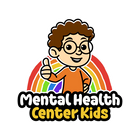Hope isn’t just a feeling. It can actually help kids avoid risky habits like smoking or using drugs.
A study published in the Journal of Medicine, Surgery, and Public Health examined how hope affects kids who are around 9 to 10 years old as they grow into teenagers. The researchers wanted to know if kids who felt more hopeful were less likely to try harmful substances as they got older.
The study used data from a big research project called the Adolescent Brain Cognitive Development (ABCD) study. Findings show that kids who felt more hopeful were less likely to try tobacco or marijuana during that time.
Moreover, the researchers found that hope didn’t seem to be related to things like a parent’s education, where the family lived, or how well the kids did in school.
The research helps adults see how powerful hope can be in guiding kids toward safer choices.
Understanding the Research
To better understand how hope affects kids, researchers used data from the Adolescent Brain Cognitive Development (ABCD) study. They focused on 4,631 kids who were 9 to 10 years old and followed them for up to 3 years.
They collected information through surveys, interviews, and health checks. Here’s what they looked at:
-
Mental health - Parents shared whether their child felt hopeful or hopeless.
-
Substance use - Kids were asked if they had ever tried tobacco, alcohol, or marijuana.
-
Family and life experiences - Researchers gathered details on family income, financial stress, and past trauma.
-
School and behavior - They looked at grades, behavior problems, and how kids got along with others.
-
Thinking and focus - Kids were tested on memory, attention, and decision-making.
-
Health - They measured body weight and blood pressure.
The researchers discovered some important patterns:
- Hope didn’t seem to affect whether kids tried alcohol.
- Those who had tried to hurt themselves in the past were more likely to use all three substances (tobacco, marijuana, and alcohol) later on.
- Kids with more hope showed fewer behavior issues, such as acting out, anxiety, depression, or attention problems.
- They also showed better thinking skills in areas like memory and problem-solving.
- The study also found that kids with higher family income and fewer difficult life events, like trauma or financial struggles, were more likely to feel hopeful.
- On the other hand, hope wasn’t connected to their parents’ level of education or the income of their neighborhood. (This means hope may have more to do with what’s happening in a child’s personal life.)
- There was no strong link between hope and physical health factors like body weight, blood pressure, or signs of puberty. (This might mean that the effects of hope on physical health may show up later in life.)
Practical Strategies for Parents and Caregivers
We can think of hope as a “muscle” that gets stronger with practice. How can we help our children see that they have the power to build it?
Help them set small, achievable goals
Small, achievable goals are like “stepping stones.” These are manageable tasks that your child can realistically accomplish within days. Think about writing one paragraph a day instead of “finishing the whole book report” or saying hello to one new person at school instead of “becoming more outgoing.”
Keep in mind that success, even in small ways, can rewire a child’s brain to expect positive outcomes!
Pay attention to how you talk about difficulties
Some parents are completely unaware of how their everyday language influences a child’s understanding of how the world works. Even caring parents can unintentionally send the message that kids aren’t capable.
Whenever we say things like “This is too much for you to understand,” we may be trying to help, but we also risk teaching them to doubt their ability to handle challenges.
Here’s a tip: Start noticing your first reactions to everyday problems. If you’re about to say something hopeless, take a breath and turn it into an opportunity to problem-solve with your child.
For example, instead of saying, “Great, the car won’t start. This day is ruined,” try, “The car’s not working, so let’s think of what we can do. Maybe we can call a mechanic or ask grandma for a ride.”
Share stories of resilience
You can share your own age-appropriate struggles, like learning something hard, and what you did to cope. Books are also a great way to introduce resilience. What’s great about stories is that they can expand a child’s “toolkit” of coping strategies.
The researchers also say that we need to learn more about how schools and policies can help kids feel more hopeful or screen hopelessness.
Teach children how to handle difficult emotions and develop a problem-solving mindset with our Coping Skills Worksheets!





















































